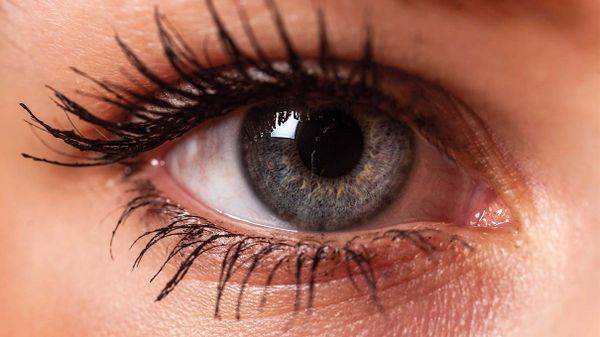When babies make their big entrance into the world, some start life with light-colored eyes, while others have irises with a darker hue. The color of a baby's eyes is affected by melanin, a type of pigment that adds dark color to the iris. This determines whether a baby will have blue or brown eyes — or a color in-between — and by the time his or her first birthday rolls around, eye color is usually set.
But what if there were a way to change the color of your eyes at any age? It's an interesting proposition, and it might soon be possible for a large percentage of the population. Rather than rely on the temporary hue adjustment offered by colored contact lenses, a laser treatment could turn brown eyes blue.
Advertisement
The procedure, which has been patented but not approved by U.S. federal regulators, focuses a beam of light for 20 seconds to penetrate a layer of pigment in the iris. After this intense penetration, the eye will spend the next several weeks naturally sloughing off tissue — and with that discarded tissue is brown melatonin. As a result, more light can be reflected from the fibers around the iris, and the eye appears to turn blue [source: Shadbolt].
Another option for changing eye color involves artificial implants that replace the irises entirely. In a 15-minute-per-eye cosmetic procedure not yet approved in the United States, a surgeon can implant a lens of virtually any color under the cornea and over the iris. When the surgery is complete, the patient's eye color will appear changed for the life of the implanted lens, which is expected to last decades.
Like all surgeries, these eye procedures aren't without risk. Scar tissue, infection and increased pressure that can lead to glaucoma are all potential problems that accompany the procedures to make eye color changes. People should take care when using colored contact lenses, too, and avoid those sold over the counter. Without a physician-dispensed prescription, there's increased risk of damaged eyes due to ill-fitting lenses or infection.
If the chance of unwelcome side effects makes you nervous, you could always consider your odds for naturally occurring change over time. Turns out, the eye color of adults can shift lighter or darker with age, disease and medication. Of course, you're likelier to go from blue to brown than from brown to blue. Some medications that combat glaucoma can make eye pigment darker, while the ocular disease acquired heterochromia iridis can result in eyes of two different colors, such as one blue eye and one brown eye. And, for some genetically predisposed people, eye color simply becomes a bit darker with age.
Advertisement



